
A tree in habitat iNaturalist observation 38111819 [Joey Santore, 2020.01.30]
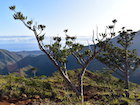
A tree in habitat iNaturalist observation 38111819 [Joey Santore, 2020.01.30]
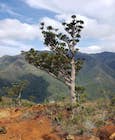
A tree in habitat iNaturalist observation 38111819 [Joey Santore, 2020.01.30]
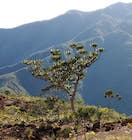
A tree in habitat [Adam Black, 2020.01.30, Facebook post].
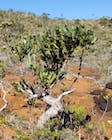
A tree in habitat [Adam Black, 2020.01.30, Facebook post].
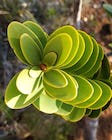
Foliage on a tree in habitat [Adam Black, 2020.01.30, Facebook post].
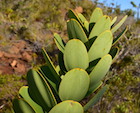
Foliage on a tree in habitat iNaturalist observation 38111819 [Joey Santore, 2020.01.30]
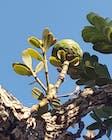
Seed cone in situ, on a tree in habitat [Adam Black, 2020.01.30, Facebook post].
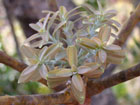
The "kaori de montagne" at 200 m altitude at the eastern end of the Plaine des Lacs, southern New Caledonia. Note the distinctive glaucescent farinose bloom on the young shoots [Timothy Waters 2003].

Video on New Caledonia vegetation; A. ovata, growing at the Chutes de Madeline, is featured starting at 37:05 [Crime Pays But Botany Doesn't 2020.02.02].
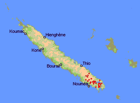
Herbarium collections of this species (de Laubenfels 1972).

Conservation Status

Agathis ovata
(C.Moore ex Veill.) Warb. 1900
Common names
Scrub kauri (Silba 1986), kaori de montagne [French] (Schmid 1981).
Taxonomic notes
One of the five Agathis species native to New Caledonia. Synonymy (Farjon 1998):
Description
"A shrub or small tree 1-8 m tall, often branching from the base, or to 25 m tall with a clear bole for 12 m high. Crown somewhat flattened. Bark with prominent fissures, whitish or tan, interior-bark red-brown. Branches alternate, opposite, or in whorls of 3-4, yellowish-brown. Buds round, with 4 densely imbricate scales. Leaves ovate to ovate-elliptic, dark green, pale or glaucous below, 4-8 cm long by 1-5 cm wide, apex broadly obtuse, petiole flattened, margins slightly recurved. Male strobili cylindrical, glaucous, 3-5 cm long by 1-1.5 cm wide, on a short robust peduncle 4-6 mm long; microsporophylls imbricate, triangular. Female cone globular, to 12 cm long by 10 cm wide, scales brown with a short-pointed umbo. Seeds 9-11 mm long by 8 mm wide, with a broad nut and an oblique wing on one side" (Silba 1986). See García Esteban et al. (2004) for a detailed characterization of the wood anatomy.
Distribution and Ecology
"S New Caledonia: Mt Humboldt to Mt. des Sources, 150-1000 m" (Silba 1986). Grows in small stands, generally very open, or sometimes in forest (Schmid 1981). Stand structure is described in more detail in the abstract for Enright and Goldblum 1998, reproduced here.
This maps shows all native species Agathis in New Caledonia, keyed by color; A. ovata is red. Click on an icon for further information. Distribution data from GBIF (2020.03.30), edited to remove duplicates.
The IUCN Red List states that Agathis ovata is scattered in maquis shrubland in a few localities on ultramafic soils in the south, and that it is vulnerable to mining activities, fires and logging. The species is slow growing but regenerates well where there is no burning. However, it is facing a very high risk of extinction in the wild due to a limited and severely fragmented range that is experiencing continuing declines in extent of habitat, number of subpopulations, and number of mature individuals.
Remarkable Specimens
"Preliminary evidence from tree-ring studies indicates that rings may be annual. Estimated diameter growth rate is about 2 mm/yr for trees >10 cm dbh, and ring counts suggest tree ages of up to 400 years in maquis and 500 years in forest" (Enright and Goldblum 1998).
Ethnobotany
No data as of 2023.02.22.
Observations
The account at the IUCN Red List states that the trees "in Rivière Bleue Provincial Park are effectively protected," so that is likely a good place to try to see it.
Remarks
Citations
See also
Association Endemia, a site devoted to New Caledonian species. Has excellent photos, a range map, and other information. In French.
The species account at Threatened Conifers of the World.
de Laubenfels (1972).











